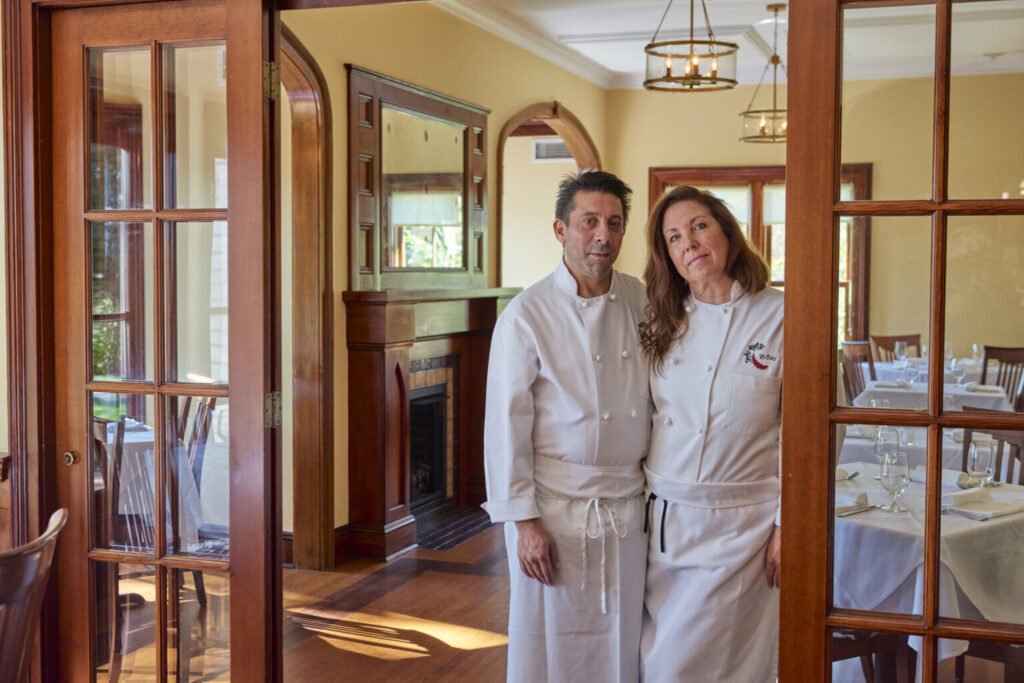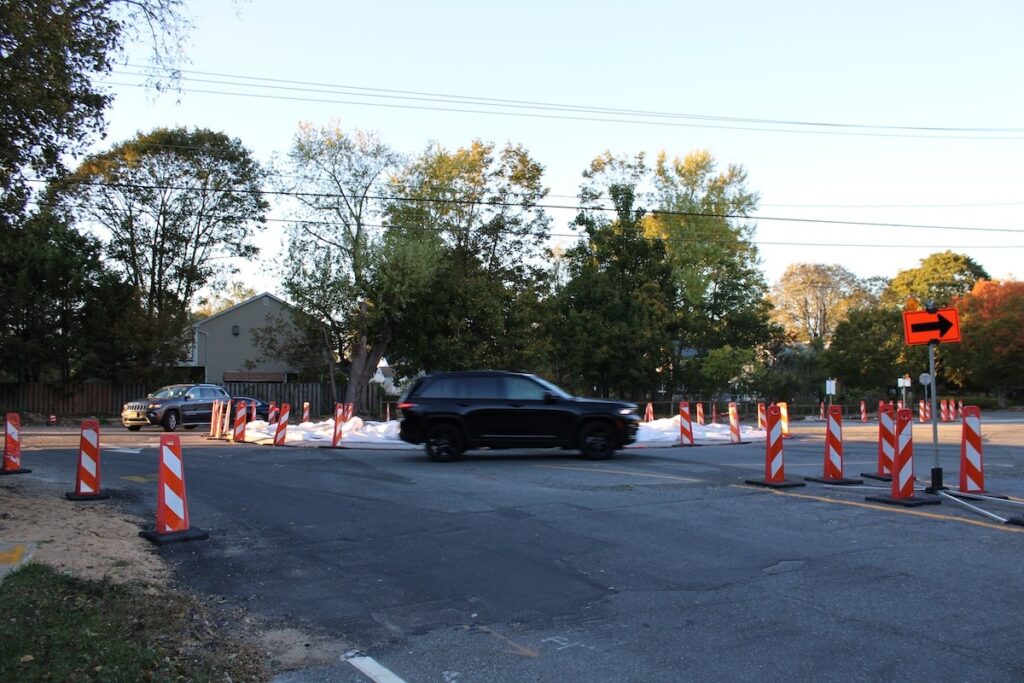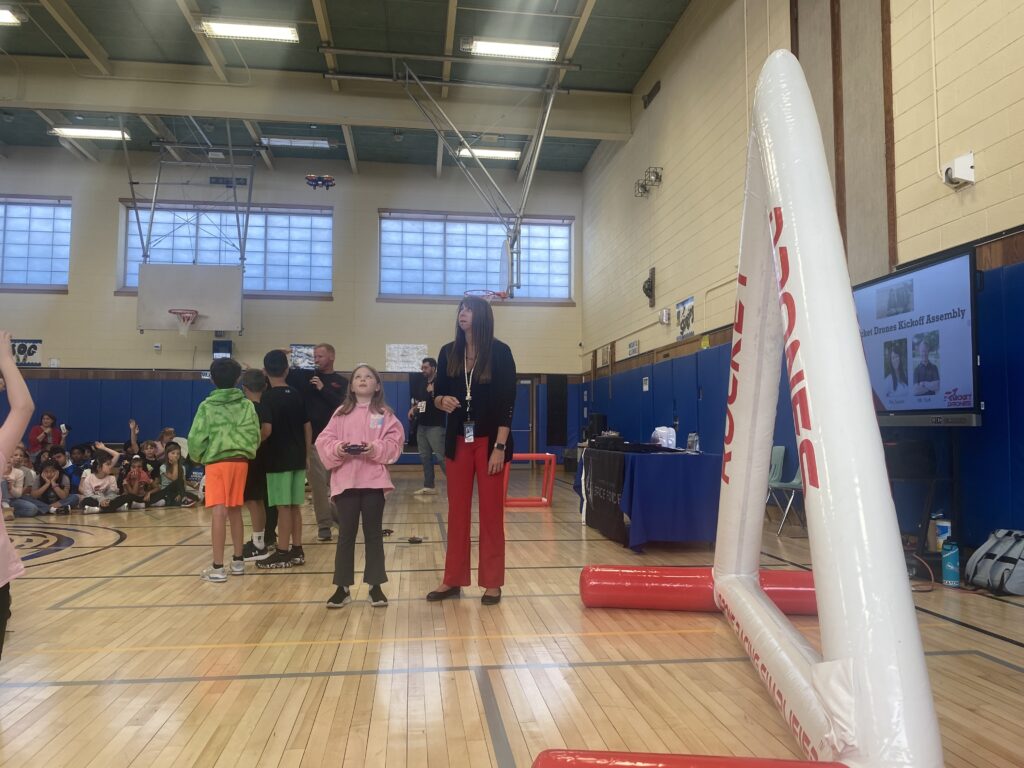Birders from near and far go ‘cuckoo’ for rare bird spotted in Riverhead
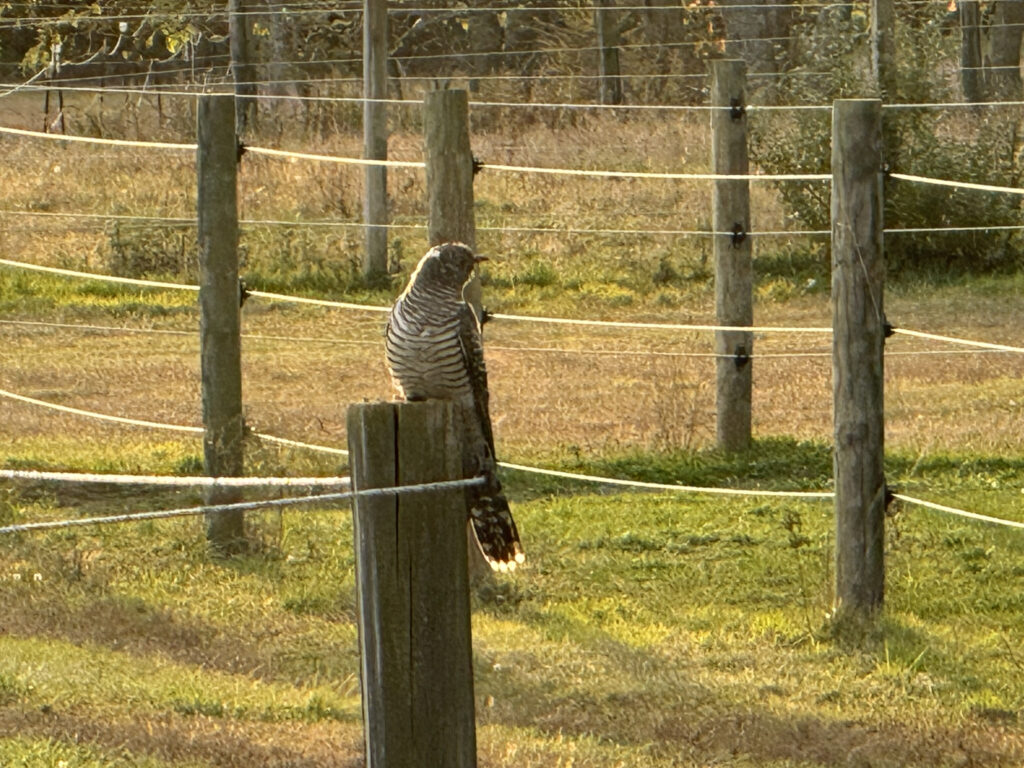
Birders have been flocking to Riverhead since Friday morning hoping to catch a glimpse of the rarest bird to be spotted in New York in a long time, ironically named the common cuckoo—yes, the one from the clock.
Residents may have seen cars lining farmland along Roanoke Ave., and golfers may have noticed the parking lot of Woods at Cherry Creek golf course is fuller than usual this weekend. The super telephoto cameras, spotting scopes and binoculars of all sizes are all searching for the wayward cuckoo that has never been seen in New York before, and only two other times on the East Coast. It’s last official sighting was in 2020 in Rhode Island, and the first in Massachusetts back in 1981.
North Fork bird and bug enthusiast Jay Rand was one of the first “on” the bird Thursday evening. He said the common cuckoo is currently in the wrong hemisphere. “I think that’s where the common name came from. Cuckoo is a widespread European and Asian bird, and then they migrate south to Africa for the winter,” he said. “So this particular, likely first-year bird, was probably trying to migrate and maybe got blown over by that nor’easter.”
He said strangely enough, the initial sighting was actually made by a non-birder. Roy William Gardner was golfing at the Vineyards Golf and Country Club, happened to see it and snapped a photo to send to his birder nephew, Chris Sayers. From there word got to Jay McGowan, who works with the Cornell Lab of Ornithology upstate. Once confirmed as the common cuckoo, he sent out the rare bird alert to the New York Birding community on Discord at 4:55 p.m.
At 6:04, Mr. Rand posted “On it now!” He and five other birders all saw it together. Since then there have been 213 recorded sightings of the cuckoo on the birding site ebird.org. Mostly it was observed eating caterpillars. Two stakeout spots were set up over the weekend with many birders on the lookout for it, one at Woods at Cherry Creek and on Roanoke Ave. south of Reeves Ave.
Due to the extreme rarity of this species to the country, birders hopped in cars and ferries and even on airplanes to see it. Mr. Rand said well-known birders David and Tammy McQuade of Florida made the trip north. They often see 600 to 700 species of birds a year. Mr. McQuade reported it to his ebird list Saturday, Oct. 25.
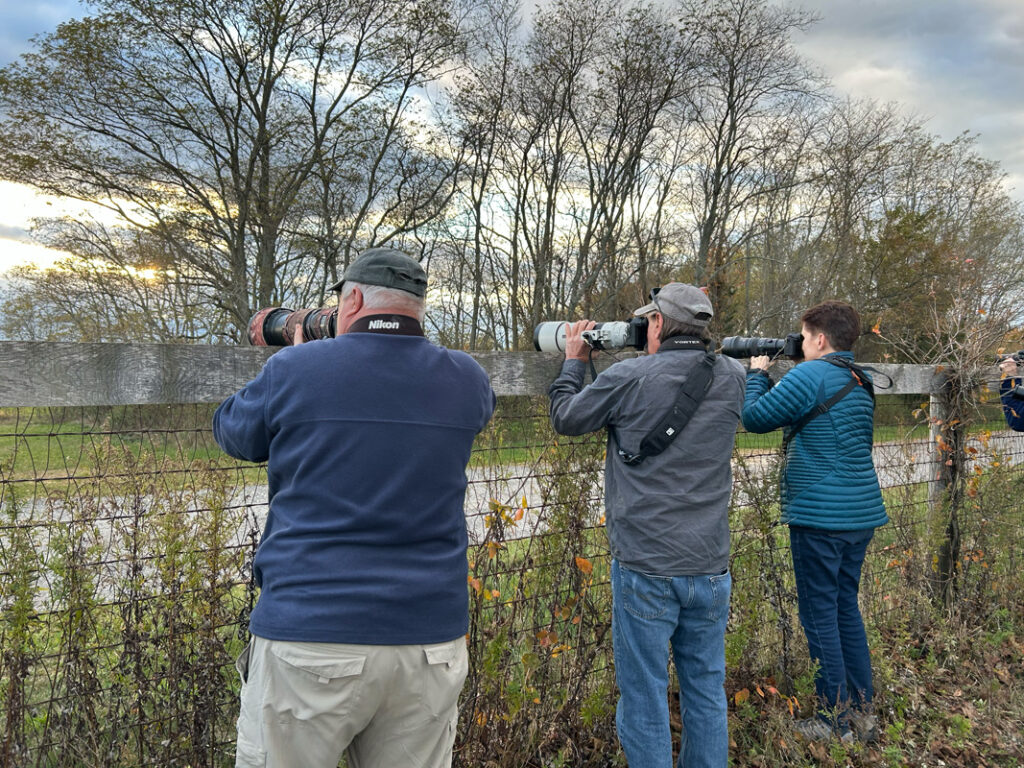
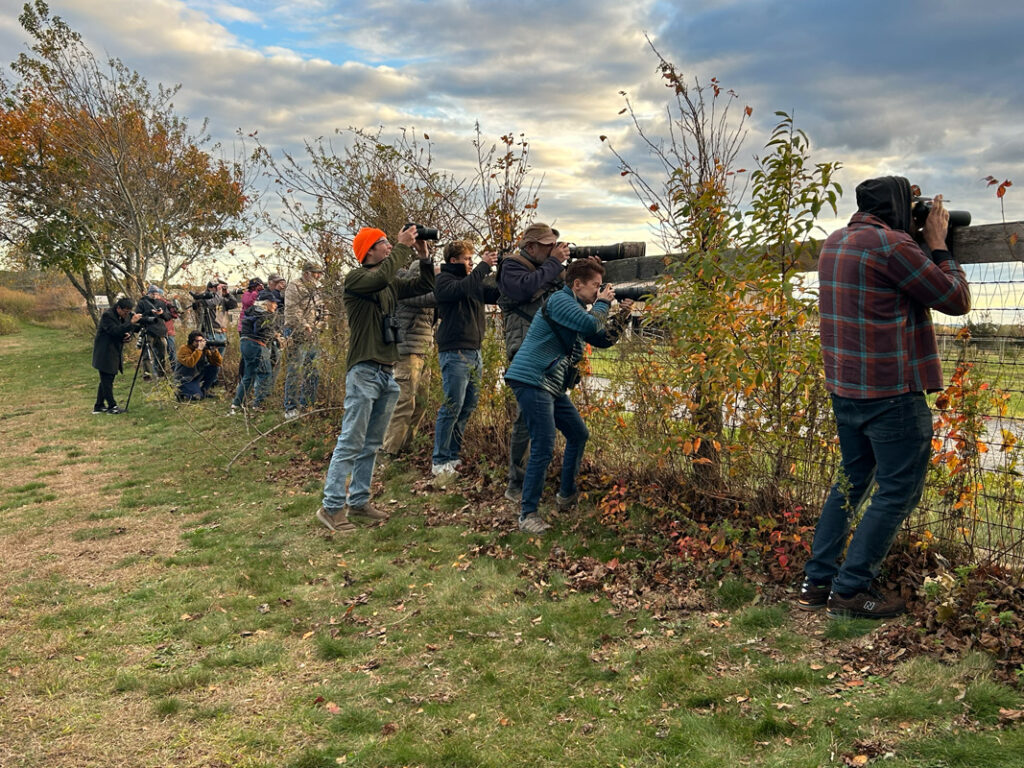
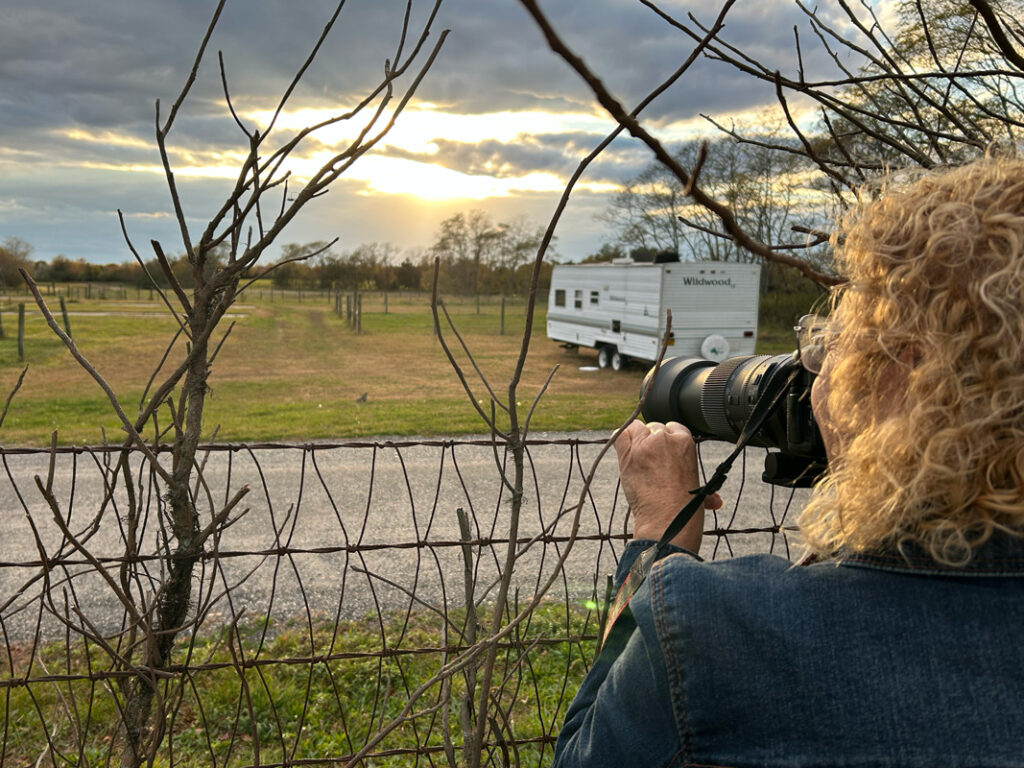
Both the farm and the golf course have been relatively open to the birders using their properties to spot the cuckoo, similar to last year when the rare lazuli bunting was spotted on a home bird feeder. There were some reports of the golf course sending birders away once the golfers teed off. Mr. Rand said that as long as birders are respectful of the property and neighbors, there is unlikely to be problems. He said trespassing is only one of the concerns, however, especially with a rare bird outside it’s element, often called a vagrant in the birding community.
“Sometimes people with their cameras and cell phones, trying to take pictures, get a little close to the bird,” Mr. Rand said. “There’s two things and a really bad one is you’re stressing the bird out. The bird was just feeding in a great spot and now it has to find another good spot, but in addition, if the bird just flew away, you ruined it for other people that were coming to go see it,” he added.
He said that was the case for the common cuckoo as well, but that after a few hours, it was relocated and the location reshared.
Mr. Rand said the birding community in general is growing ever more inclusive with information on sightings shared on ebird.org, Discord and social media. He said the hobby is also growing thanks to the ease of getting involved with apps like Merlin, which will help identify birds through questions, but also “listen” to your surroundings and tell you which birds it hears.
He said there’s all kinds of ways to bird, from traveling and building life lists on ebird and competing with other area birders to just watching from a backyard feeder. “Bird how you want to bird,” he encouraged. Mr. Rand is currently in the top 10 of birders in Suffolk County with 349 species seen, and this common cuckoo was a “lifer” for him, meaning he’d never seen it before.
He said this vagrant in particular is special because even non-birders know what a cuckoo clock is and therefore can relate to it in some way, possibly piquing interests in birding. He also said that seeing the common cuckoo in New York is iconic and will be tough to beat moving forward.
The last confirmed common cuckoo sighting on ebird was at 9 a.m. on Sunday at the Woods at Cherry Creek.




